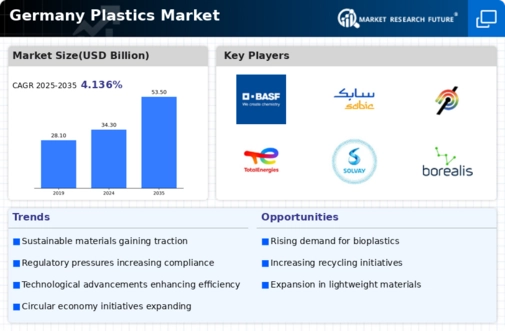The Germany plastics market is characterized by high competition and innovation, driven by a combination of established players and new entrants aiming to capture market share through technological advancements and sustainability initiatives. With a robust industrial base and extensive manufacturing capabilities, Germany has become a critical hub for the production of plastic materials ranging from basic polymers to specialty products. The demand in industries such as automotive, packaging, and construction continues to push the boundaries of plastic applications, creating a dynamic environment for companies to thrive.
This competitive landscape is influenced by various factors, including regulatory frameworks, consumer preferences for sustainable products, and the overall economic climate. Understanding these competitive insights provides essential knowledge for players in this market to refine strategies and improve their market positioning.BASF, being one of the prominent players in the Germany plastics market, has established a powerful presence through an extensive portfolio of high-performance materials tailored to multiple applications. The company is known for its focus on innovation and has invested heavily in research and development to enhance product offerings and increase efficiency.
BASF's strengths in the market stem from its integrated production sites in Germany, which allow for optimized supply chains and reduced lead times. Furthermore, the company emphasizes sustainability, producing biodegradable plastics and promoting the circular economy. Its ability to work closely with customers to co-develop solutions reinforces its market leadership and adaptability to changing industry trends.SABIC plays a significant role in the Germany plastics market by offering a diverse range of products, including advanced polymer solutions tailored for various applications like packaging, automotive, and consumer goods.
With a strong manufacturing footprint and RD centers in Germany, SABIC is well-positioned to capitalize on local market demands. The company’s strengths lie in its innovative solutions and commitment to sustainability, often exploring bio-based polymers and improved recycling processes. SABIC has actively pursued strategic mergers and acquisitions to enhance its market share and expand its product portfolio within Germany. By leveraging significant technological capabilities and maintaining strong relationships with local industries, SABIC has reinforced its competitive edge, ensuring a robust presence in the rapidly evolving landscape of the German plastics market.
























Leave a Comment